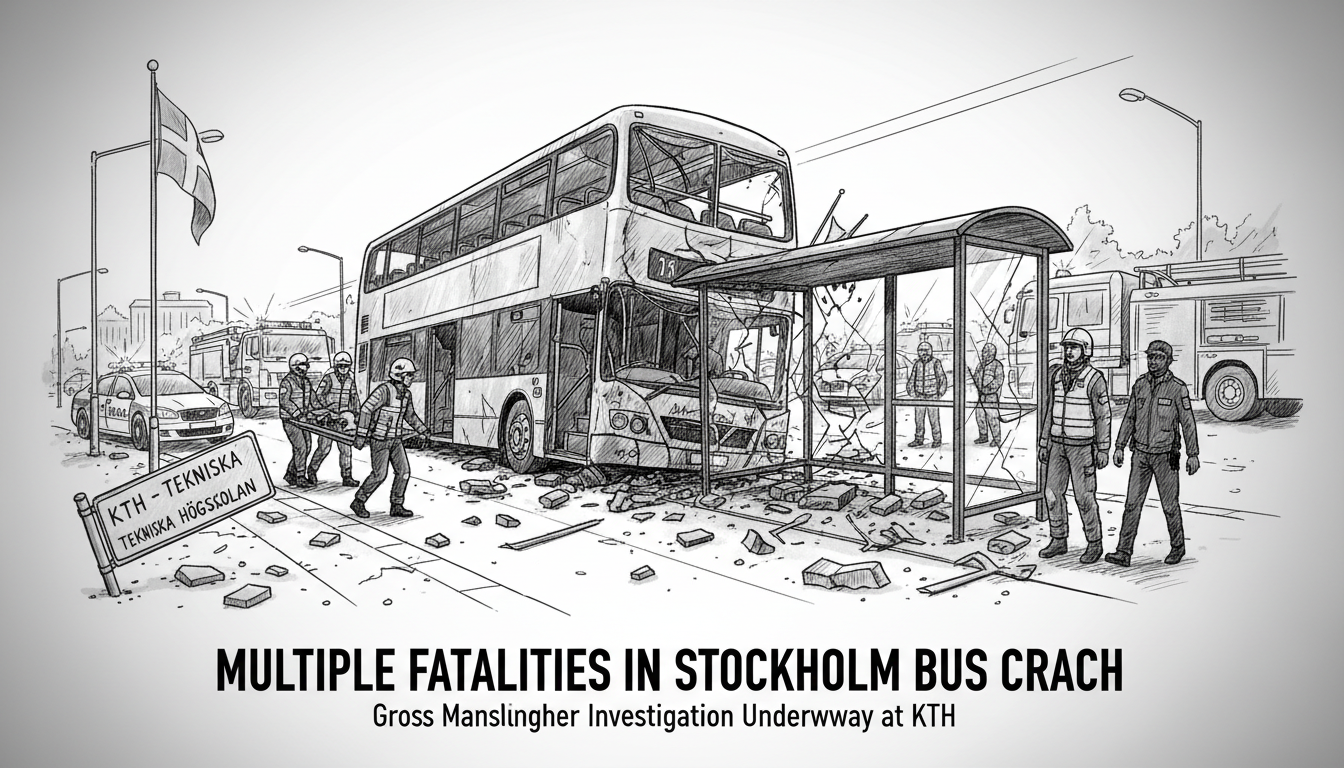A double-decker bus crashed into a bus shelter on Valhallavägen in Stockholm's Östermalm district, resulting in multiple confirmed fatalities. Emergency services received the initial alert at 3:23 PM near the Royal Institute of Technology. Police confirmed several deaths by 4:17 PM, describing the situation as serious with both injured and deceased victims.
Witnesses described chaotic scenes as dozens of police vehicles, rescue services, multiple ambulances, and a medical helicopter responded. One observer reported seeing the bus had completely struck the bus shelter, creating total chaos at the scene. The bus driver was arrested by authorities, and the incident is being investigated as gross manslaughter, though the cause remains unknown.
The involved bus belonged to transport company Transdev and was operating as route 676 between Norrtälje and Stockholm. Rescue services confirmed the bus was not in active service at the time of the incident and carried no passengers. This raises immediate questions about what the empty bus was doing on this route and why it struck the crowded bus shelter.
This tragedy represents one of Stockholm's most serious public transport incidents in recent years. Sweden generally maintains an excellent public safety record, particularly for its extensive and reliable public transportation system. The location near one of Sweden's premier engineering institutions adds particular gravity to the incident, as the area typically sees high pedestrian traffic from students and academics.
Public transport safety in Nordic countries typically sets global standards, making this incident particularly shocking for local residents. The immediate arrest of the driver suggests authorities are treating this as more than a simple traffic accident. The investigation will likely focus on mechanical failure, driver medical condition, and potential operational protocol breaches.
For international readers, it's important to understand that Swedish public transport systems are widely regarded as among the world's safest. This incident represents a rare and tragic exception to Sweden's normally impeccable transportation safety record. The coming days will reveal whether this was an isolated mechanical or human failure, or if broader systemic issues require addressing.
Stockholm residents and regular public transport users will be watching closely as the investigation develops. The psychological impact on witnesses and the broader community cannot be underestimated, particularly given the violent and unexpected nature of the incident in what's typically considered one of Stockholm's safest districts.

